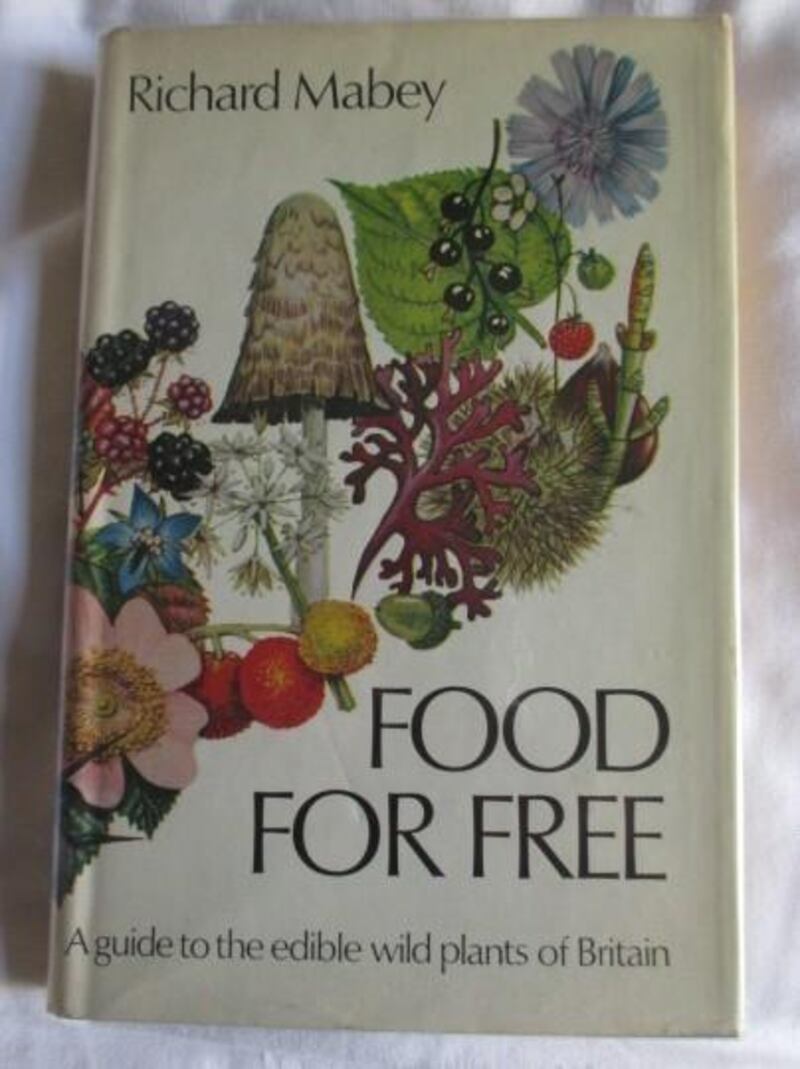I was 11 years old when Food For Free was first published in 1972, and I pounced on it. Already mad keen on the Stone Age, I now had a book which would help me become a hunter-gatherer, and find stuff to eat in the wild. (Or if not the wild, then the next best thing, which in my case was Wimbledon Common.)
If you don’t know the book, it’s a guide to foraging Britain’s wild plants, written in a disarmingly chatty yet erudite style, and sprinkled with practical tips and snippets of plant lore. To me, though, it was far more than a foraging guide.
It made me see the tangled “weeds” around me in an entirely new light.

Neither my Belgian mother nor my South African father knew much about the flora and folklore of Britain, so of course I didn’t either.
Until I read Food For Free. Under Richard Mabey’s expert guidance, familiar plants such as nettles, dandelions and elder became portals to the Stone Age; to 17th-century medicine, and obscure byways of history. Who would have thought that “there was once a lively traffic in truffles in the southern counties of England”, where they were “sniffed out of beech woods by Spanish poodles”? (I wondered whether my spaniel Tommy might get lucky among the beeches near our local pond; and how did a Spanish poodle differ from a normal one?)
Mabey made young beech leaves sound like enticing treats. “It is difficult,” he writes, “not to want to chew a few as you walk through a beech-wood in spring.” My friends resisted the temptation, but I was transported. Munching leaves made me feel closer to trees, and to an older way of inhabiting the woods.
I loved Mabey’s bits of advice, which to a suburban child felt like the inner mysteries of plant lore. Elderberries are ripe when the clusters start to turn upside-down. The lowest blackberry at the tip of the stalk is the fattest and sweetest. Wild redcurrants “are best eaten as a bracing field-snack”. (I never found any growing wild, but I adored the notion of a field-snack.)
And of course I tried Mabey's recipes. I roasted dandelion roots and made coffee – which only I would drink. I added borage leaves to my long-suffering parents' Pimms; and on a cottage holiday in Wales, I dragooned the whole family into picking bilberries; my sweet bilberry pudding was one of my rare successes.
Virulent green
On one memorable day while my mother was out, I inflicted a herbal lunch on my father and sisters. The nettle soup was delicious; but I’d forgotten to put the lid on the liquidiser, so my mother came home to find her kitchen spattered in virulent green.
To my delight, my wine looked and tasted like Ribena – albeit with a formidable kick: my mother found me dozing tipsily on the kitchen floor after I'd syphoned off a batch
I couldn’t afford a bottle of spirits to make one of Mabey’s tempting herbal liqueurs, but in the local library I dug up a recipe for elderberry wine, and set to work brewing. To my delight, my wine looked and tasted like Ribena – albeit with a formidable kick: my mother found me dozing tipsily on the kitchen floor after I’d syphoned off a batch.

I also loved the book’s forays into folk medicine: the fact that yarrow was once used for treating wounds, and that grated comfrey root made a plaster for setting bones. Mabey’s references to the 17th century herbalists Gerard and Culpeper prompted me to save up my pocket money and buy my own copy of Culpeper. (Fifty years later, it’s still on my bookshelf; I’ve used it countless times while writing my Wolf Brother books and my Gothic novels, particularly Wakenhyrst.)
Food For Free encouraged me to go further than merely trying recipes. I dug up part of our lawn and grew little-known herbs from seed, or from plants snaffled from the common (this was before digging up wild plants became illegal). I loved the names: betony, lovage, horehound. I felt like a witch as I brewed potions and tried them out on my little sister.
Of course, much in Food For Free remained aspirational, to be enjoyed only in my imagination. My mother had put her foot down about experimenting with wild fungi, but I longed to find a giant puffball.
“To come upon one of them suddenly is a memorable experience,” writes Mabey, “only rivalled by the taste of the first mouthful.”
Sadly, I never did.
Portal to the past
Above all, though, Mabey’s wonderful book was my portal to the past. It was from him that I learnt that Native Americans used to make sweets of dried reed sap; that silverweed roots were eaten in the Stone Age; and that Tollund Man’s last meal was a gruel of fat-hen seeds. So it was no coincidence that, three decades later, these plants and many more would feature in my Wolf Brother series about Stone Age hunter-gatherers.
The timing was perfect. The environmental movement was gathering pace, and 'self-suffiency' was on its way to becoming a buzzword
Throughout the nine books that chart the adventures of a boy, a girl and a wolf, my well-thumbed copy of Food For Free has been a standby on my bookshelf. For the final book, Wolfbane, I often referred to it while munching my way through kelp, oarweed and dulse during a research trip to the shores of British Columbia.
But let’s go back to 1972, when Food For Free first came out.
The timing was perfect. The environmental movement was gathering pace, and “self-suffiency” was on its way to becoming a buzzword (the television sitcom The Good Life was only three years in the future). The book was an instant success, and it has gone on to introduce generations of readers to the splendour and strangeness of our plant lore. It has never been out of print.
So let’s drink a toast – in sloe gin, meadowsweet cordial, or whatever takes your fancy – to Food For Free’s 50th birthday. And to Richard Mabey: a heartfelt thanks.
Wolfbane by Michelle Paver is published by Zephyr











